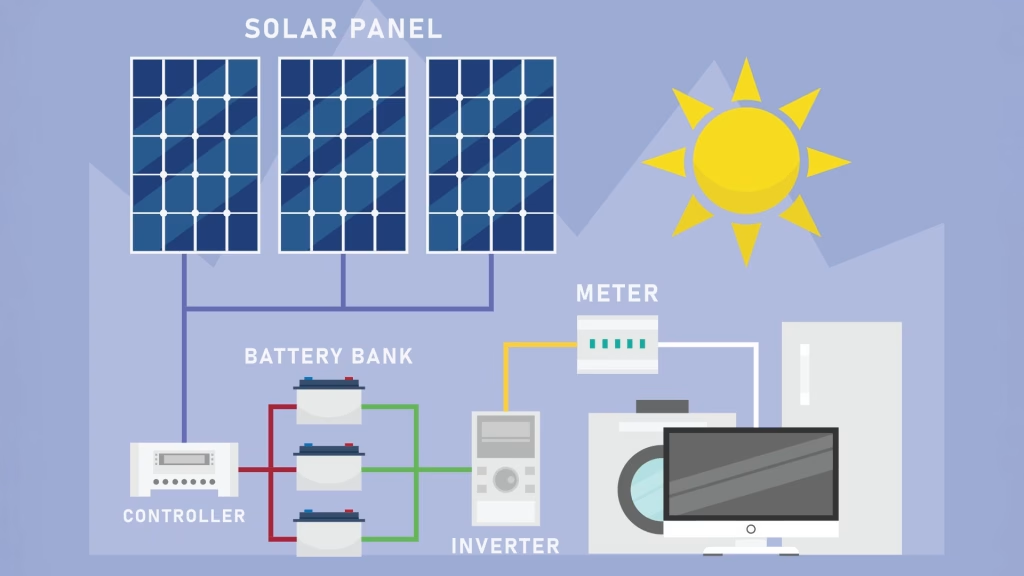Electricity costs on Mull continue to rise, while grid reliability remains uncertain in many remote areas. Solar power offers a practical way to reduce bills, increase energy independence, and protect your home against future disruptions.
Is Solar Power Viable on Mull?
Yes, Scotland has a reputation for cloud cover, but solar panels still generate usable energy throughout the year. Mull’s long summer days and the efficiency of modern panels allow most households to offset a significant portion of their electricity use, even without direct sunlight.
What You’ll Need
Solar panels: Roof-mounted or ground arrays depending on property layout.
Battery storage: Essential for off-grid setups or storing excess daytime power for evening use.
Inverter: Converts DC power from panels into usable AC electricity.
Smart meter: Tracks usage and export if you’re grid-tied.

Available Grants and Support
Home Energy Scotland provides interest-free loans and cashback for solar installations. Your eligibility depends on factors like property type, household income, and whether your installer is MCS-accredited. To check the latest terms or begin an application, visit Home Energy Scotland.
Recommended Installers for Mull
To find vetted installers, start with trusted platforms like Energy Saving Trust or Which?. These sources list professionals who meet quality standards and understand the realities of domestic solar. Avoid mainland firms that overlook island logistics. Local experience makes a difference.
Estimated Costs and Savings
A typical 4kW solar system costs between £5,000 and £7,000 to install. If you add battery storage, expect an additional £3,000 to £5,000. Annual savings usually range from £300 to £600, depending on your energy usage and export tariff. Most households recover their investment within 8 to 12 years, and that payback period shortens if you qualify for grants or use more electricity during daylight hours.
Off-Grid vs Grid-Tied
Grid-tied: Lower upfront cost, export excess power, but still reliant on grid stability.
Off-grid: Full independence, higher cost, requires robust battery and backup systems.
Get Paid for Exporting Solar Power
Most energy companies won’t mention it, but if your solar panels send electricity back to the grid, you can get paid for it. This is called the Smart Export Guarantee (SEG).
SEG is a UK government-backed scheme that requires licensed electricity suppliers to pay households for excess renewable energy they export. You’ll need:
- MCS-certified solar panels
- A smart meter that tracks export
- An active SEG tariff with a licensed supplier
Rates vary, from 1p to 25p per kWh depending on the supplier. Some offer better rates if you also buy electricity from them, but you can switch SEG providers independently.
Example: exporting 2,000 kWh/year at 6p earns you £120/year in passive income.
To claim SEG payments:
- Install MCS-certified solar panels
- Get a smart meter that tracks export
- Apply directly to a SEG-licensed supplier
- Submit export readings or let the meter report automatically
More info: GOV.UK – SEG Overview
Final Tips
Get multiple quotes. Ask about MCS certification. Check roof orientation and shading. Consider future-proofing with EV charger compatibility or heat pump integration.
Solar power makes sense for Mull. It cuts bills, adds backup during outages, and gives you more control over your energy use. Whether you’re grid-tied or fully off-grid, the right setup can deliver long-term savings and reliability, without the sales pitch.

